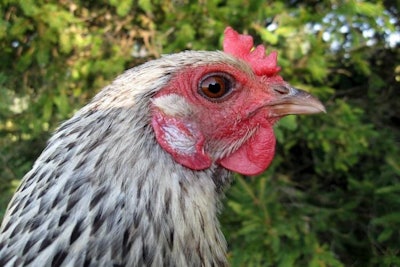
Two years have been enough to reshape the poultry industry. This was expressed by Will Sawyer, executive director of U.S. animal protein research at Rabobank, during the opening session of the Peruvian Poultry Congress, September 13 in Lima, Peru. But, nevertheless, there have been great benefits.

Will Sawyer with Rabobank, said in Lima, Peru, that the devaluation of currencies is reshaping poultry production costs.
These are the main contributing factors:
1. Avian influenza and global trade flow
Everything started on December 1, 2014, with outbreaks of avian influenza in the U.S. and its further expansion. Five years ago, the issue was grain prices. Today, avian influenza is what defines the poultry industry.
One of the key variables is that all types of poultry were affected, except broilers. However, profitability reached record highs. But immediately after that, the effects on foreign trade came when many countries closed their borders to all U.S. poultry production or poultry from certain U.S. states. Thus, the profitability of leg quarters was affected and adjustments had to be made.
2. China’s poultry gap
In this two-year period, China has also had its problems with human H7N9 avian influenza cases, which led to consumers being fearful to buy chicken. But with avian influenza in countries sourcing poultry genetics and China closing borders, the country is facing a serious shortage.
The Chinese market is developing a huge gap in poultry products supply. This gap will affect the world market. Thus, China will have to open imports to avoid a serious supply problem.
3. Currency wars
The devaluation of "currencies is reshaping production costs," Sawyer said. Although the devaluation of the Mexican peso, Colombian peso and other Latin American currencies were mentioned, Sawyer spoke mainly about Brazil. He said that "although the light at the end of tunnel can be seen, there is a growth of less than 1 percent" of the economy.
Thus, the absence of avian influenza and improved competitiveness caused by devaluations makes South America a key factor to growth and profitability of the poultry industry.
4. Brazil will fill the void
With the devaluation of the Brazilian real, it is clear there is an incentive to expand exports. Due to health problems in other countries, Brazil will be the winner that takes it all. In fact, exports in the first half of 2016 from the country were 2.14 million metric tons (MT) compared to the same period of 2015, when 1.87 million MT were exported.
It is also evident that the avian influenza-free Brazilian poultry industry, will be the only option China will have to fill its void.
5. Global overview
Overall, worldwide growth in the poultry industry is expected. However, it is in the developing world where the greatest expectations are focused.
Sawyer spoke of profit margins in different areas, and referred in particular to North America, which is stepping up in the next few years. The profit margin in the US is 13.4 percent and it is 14.1 percent in Mexico. In Brazil, for example, it is 3 percent. It is worth mentioning that profitability is much higher in companies such as JBS and BRF, compared to other Brazilian companies.
Finally, by 2020, chicken meat will be the most consumed meat in the world, due to the strong profitability and demand. He also noted the expansion of fast-food chains. In China, for example, it is not only Western chains, but also local chains. And the fastest growing fast-food chains have chicken in their menus.


















